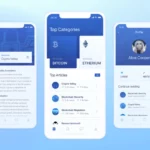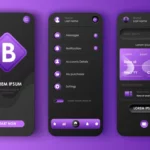Surveys are one of the many useful UX research tools used to quantify what you found in other qualitative research carried out to consider users’ perspectives.
There are many reasons to go for UX surveys.
- To create 3-4 personas, what is the user sample required?
- If your sample size is 20 people, do they represent your potential users?
- To know if one “persona” is dominant in our population than others?
- To quantify your usability test after you discover the user lacks domain knowledge.
- Recheck something you have discovered in the analytics. For example, recheck an analytical result showing the high purchase in iOS users compared with Android users.

Table of Contents
Do you need a UX survey?
UX surveys quantify your analysis. You need to know if you follow a particular method that is appropriate. Conducting UX surveys seems to be easy, but it’s the opposite.
Constructing the questions is tricky, as we create questions that validate our assumptions.
UX survey as a research tool applies to quantify “something” previously discovered in qualitative research. For example, to know if you need UX surveys, the easy way is to conduct user interviews.
The problem occurs when surveys are inappropriate and applied under the unrelated concept.
- The survey’s discovering their future! Ask people’s future perspectives, or ask them to predict the future. People are not good at predicting, and the surveys are inapplicable in this context.
- Surveys to know what people need from a product, but people often can’t articulate what they need.
A survey is dangerous if your team thinks of it as a de facto standard research tool when they don’t know about research.
How to advance with UX Surveys?
The surveys are easy to administer, but with surveys, you won’t identify when you’ve screwed up, unlike qualitative surveys.
Once you have completed UX surveys, the next is to ask the right questions. The correct set of questions will ensure that your survey won’t fail. The following tips will help you frame the right questions.
- Avoid using leading questions:
For surveys, ask open-ended questions. You will discover more in open-ended questions than leading or closed-ended questions as they point to a particular answer.
- Concentrate on experience:
People are unaware of what they want or what features they like to have. It’s better to ask about the experiences or current situations instead of their expectations.
- Avoid using double negatives:
A question including two negative terms confuses a reader. If your user cannot understand the question, do not accept the answer.
- Stay away from jargon if your users lack the knowledge:
Ask the questions with complex terms or jargon only if your user is aware of them. Simple language and avoiding assumptions will fetch the results from your survey questions.
- Ask one question at a time:
Focus each question on a single concept. A question with one subject and a verb is perfect for the user to focus and allow for a single response.
- Screen your questions:
There is a reason to frame questions, so you need a clear idea about what you want to learn from the results.
- Provide good options:
A good survey with practical questions generates quality data. Poor questions give us unreliable, poor feedback. You won the half battle when a user is ready to provide feedback. But if they drop-out, while they take part in the survey, then the most prominent reason is improper arrangements of questions.
These are some points you need to remember while you design the questions.
- The sequence of options is significant.
- Avoid overlapping options.
- Carefully decide when to use checklist/radio buttons/text fields.
- Provide a neutral choice, as it plays a role in surveys.
- Create a logical flow
Arrange the questions to make them simpler and faster to answer.
- Organize the questions into logical groups, so keep the like questions together.
- Start with the easy and broad questions and slowly progress to specific and harder ones.
- Break it into multiple pages and leave out the questions that are irrelevant to a participant
- Explain all survey details in the introduction and provide sufficient time to complete the survey.
- Don’t waste users’ time and keep the survey short to avoid user fatigue and extract maximum benefits.
- Test your survey:
Testing a survey with a group of 2-4 people is a good idea before launch for your users. A pilot survey can point to questions, flow, and options for the users.

- Try to reach the relevant:
The basic framework, questions ensure the collection of relevant information, avoid irrelevant questions that creep into an activity.
- Clean the data collected:
Remove the noise from the data. By removing noise, you allow them to focus on the answer. Even you can summarize the questions asked in the interview.
Cognitive Psychology:
It is crucial to know if people understand the questions given in a UX survey without additional support.
To ensure the users don’t need help to answer your questions, you can use the “Cognitive Interviewing” technique. Conduct a pilot test for your survey to check people have understood it. If not done, the analysis will make little sense.
Nutshell:
For a successful survey, you need to ask the right people the right question in the right way. With this approach, you will have an excellent outcome. If not, you will run into problems. So as long as you use surveys appropriately, they act as a distinguished research tool.
Consider the discussed guidelines, rules while designing the questions. The order of questions, wordings, logical response options facilitates the proper consequences from your UX surveys.
Surveys give remarkable insights into your problems and are one of the best research tools used for the solutions developed for the masses. Since surveying every user is impossible, you must ensure your survey samples represent many users. You can also conduct cognitive interviewing before planning the survey. This technique ensures your user has a proper understanding of your questions.











